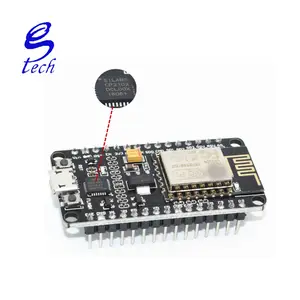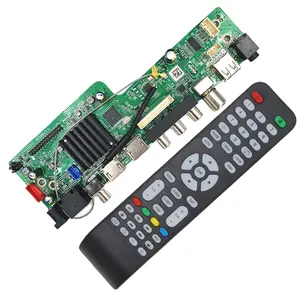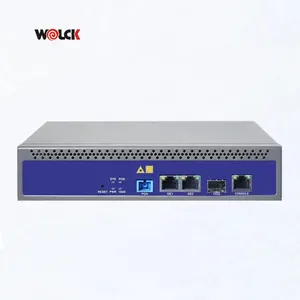Popular in your industry




























































































































































































Top categories
About displacement sensor price
Displacement Sensor Cost Guide
Displacement sensors are essential instruments utilized for measuring an object's position, distance, and level concerning a reference point. They play a vital role across various sectors like manufacturing, automotive, aerospace, and construction, particularly where precise measurements are crucial. These sensors function based on diverse principles such as ultrasonic, capacitive, inductive, and resistive sensing methods, each tailored to specific applications and environments.
The cost of displacement sensors can significantly vary based on their sensing technology, accuracy, and functionalities. For example, a basic linear potentiometer may cost less compared to a high-precision laser distance sensor. At the lower end, these sensors might be suitable for simple tasks like material handling or basic position monitoring, while advanced laser distance sensors could be utilized for highly accurate measurements in research settings or complex industrial operations.
Displacement sensors operate by converting physical position into an electrical signal for measurement purposes. For instance, inductive sensors utilize electromagnetic induction, where an energized coil with alternating current generates a magnetic field that alters with the object's position, subsequently detected by the sensor's electronics, providing an output signal proportional to the object's displacement. Other sensor types operate on principles like piezoelectricity or capacitance changes, depending on specific application needs.
Businesses aiming to procure displacement sensors must grasp the cost considerations. Several factors, including complexity, precision, and operating environment, can influence the cost of these devices. Investing in high-quality sensors is paramount for enterprises requiring consistent and dependable measurements, underscoring the importance of comprehending the cost factors.
Types of Displacement Sensor Cost Guide
Displacement sensors vary significantly in complexity and application, with each type engineered to fulfill distinct requirements. Here's an overview of some common types:
-
Linear Variable Differential Transformers (LVDT): These sensors are widely used for measuring position or distance changes, operating on electromagnetic induction known for high accuracy and reliability over long distances. LVDTs find applications in automated processes and are critical for quality control in manufacturing lines.
-
Capacitive Displacement Sensors: These sensors detect changes in an electrical field through capacitors when there is displacement, suitable for applications demanding high precision albeit sensitivity to environmental factors like temperature and humidity.
-
Eddy Current Sensors: Ideal for scenarios requiring contactless sensing due to safety or system requisites, these sensors function on electromagnetic induction principles, capable of detecting various metals without physical contact.
-
Optical Encoders: These devices utilize a light beam to determine position, available in incremental or absolute variants, with the latter offering a unique digital signal for each position. Optical encoders are frequently employed in robotics, CNC machines, and automated systems.
How to Select Displacement Sensor Cost Guide
Choosing the appropriate displacement sensor for your business demands careful evaluation of multiple factors:
-
Measurement Range: Ensure the sensor can measure within the relevant range for your application, optimized for high-resolution measurements over short distances or long-range detection.
-
Sensitivity: Align the sensor's sensitivity with the required resolution for your specific application, balancing precise measurements with potential cost implications.
-
Accuracy: Tailor the sensor's accuracy to your application's needs, especially crucial for manufacturing processes or quality control applications.
-
Output Signal: Consider the type of signal (analog or digital) to ensure compatibility with existing systems, assessing how the sensor's output integrates with your current setup.
-
Environmental Conditions: Evaluate the sensor's capability to withstand the operating environment's temperature, humidity, and other conditions specific to your application.
About Displacement Sensor Cost Guide on Alibaba.com
Alibaba.com serves as a global marketplace connecting businesses with a diverse range of suppliers offering displacement sensors tailored for various industrial applications. With a broad selection encompassing linear, rotary, and 3D displacement sensors equipped with advanced technologies like laser, capacitive, and digital output choices, Alibaba.com grants access to cutting-edge innovations in sensing technology.
The platform's commitment to facilitating international trade is evident through features supporting mobile transactions and multilingual communication, ensuring buyers can confidently source products irrespective of location or language barriers. Additionally, Alibaba.com's Trade Assurance service underscores its dedication to securing transactions by safeguarding payments until delivery confirmation.
Opting for Alibaba.com provides access to an extensive network offering customized solutions to meet specific needs, whether outfitting a manufacturing plant with high-precision sensors or stocking up on essential components for resale, leveraging Alibaba.com's global reach and diverse supplier offerings proves invaluable for businesses in search of quality displacement measurement solutions.
Common FAQs for Displacement Sensor Cost Guide
What types of displacement sensors are available for industrial use?
Industrial applications feature various types of displacement sensors, including capacitive, inductive, resistive, and ultrasonic sensors, each tailored to specific industrial requirements such as precision, environmental resilience, or non-contact detection.
How do I determine the right type of displacement sensor for my application?
Choosing the suitable displacement sensor hinges on factors like the material being measured, required precision, environmental conditions, and integration with existing systems. Consulting with a supplier can aid in identifying the optimal fit.
Can displacement sensors be used in harsh environments?
Certain displacement sensors are designed to withstand harsh environments, crafted from robust materials like stainless steel or aluminum alloy. Check product specifications for the IP (Ingress Protection) rating to ensure compatibility with the environment.
Are there non-contact displacement sensors available?
Non-contact displacement sensors, such as capacitive, inductive, or ultrasonic sensors, are accessible and particularly useful for measuring dynamic events or scenarios requiring high precision without physical contact.
What is the difference between capacitive and inductive displacement sensors?
Capacitive sensors measure the distance between two plates, suitable for applications needing high sensitivity and minimal power consumption. Inductive sensors detect the presence of ferrous objects, commonly used in industrial settings with metal components.
How does temperature affect the performance of a displacement sensor?
Temperature can impact a displacement sensor's accuracy and performance due to material property changes. Select a sensor with a specified operating temperature range aligning with your application's temperature needs.
What should I consider when choosing a supplier for displacement sensors on Alibaba.com?
When selecting a supplier on Alibaba.com, assess factors like industry experience, sensor construction material quality, and the availability of Trade Assurance for payment and product quality protection.
Is it possible to customize displacement sensors based on specific application requirements?
Many Alibaba.com suppliers offer customization options for displacement sensors, allowing adjustments in measurement range, accuracy, material composition, or additional features to suit unique application needs.
How do I ensure the purchased displacement sensor is accurate?
Displacement sensor accuracy is influenced by factors like resolution, sensitivity to environmental noise, and calibration quality. Verify the sensor specifications against accuracy requirements to ensure accuracy.
What industries commonly use displacement sensors?
Displacement sensors find common use in industries such as automotive, aerospace, defense, industrial machinery repair shops, agricultural equipment, and any sector involving machinery maintenance and repair operations.
Are there maintenance requirements for displacement sensors?
Displacement sensors typically demand minimal maintenance; however, regular checks for wear or damage and adherence to manufacturer cleaning and storage guidelines are essential.
Can I get a sample before placing a bulk order for displacement sensors?
Many Alibaba.com suppliers offer sample provision before committing to bulk orders, enabling evaluation of sensor performance and suitability for the application.




















































